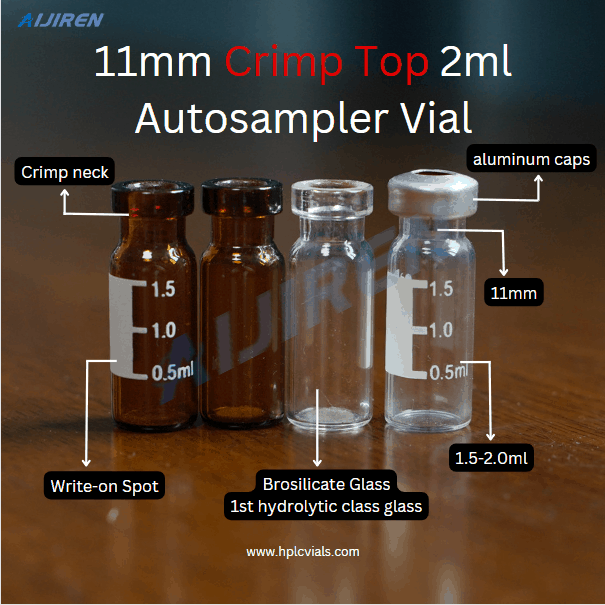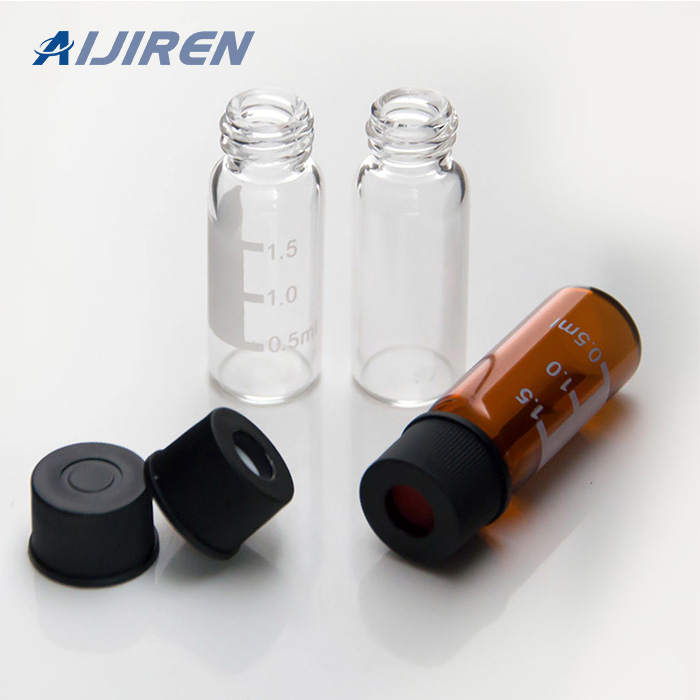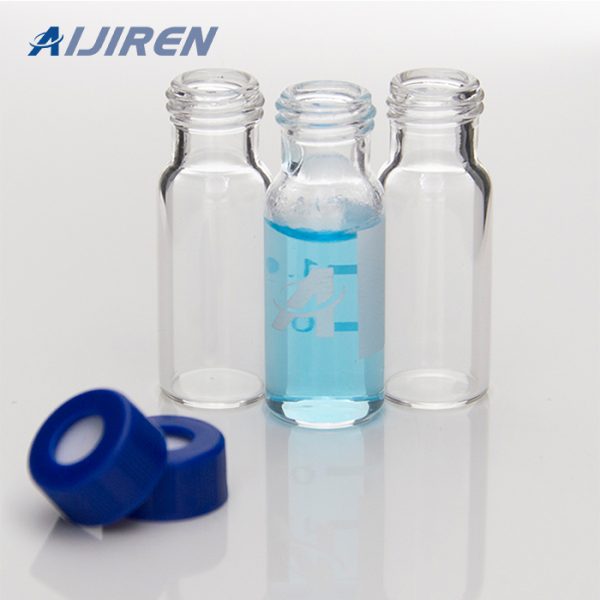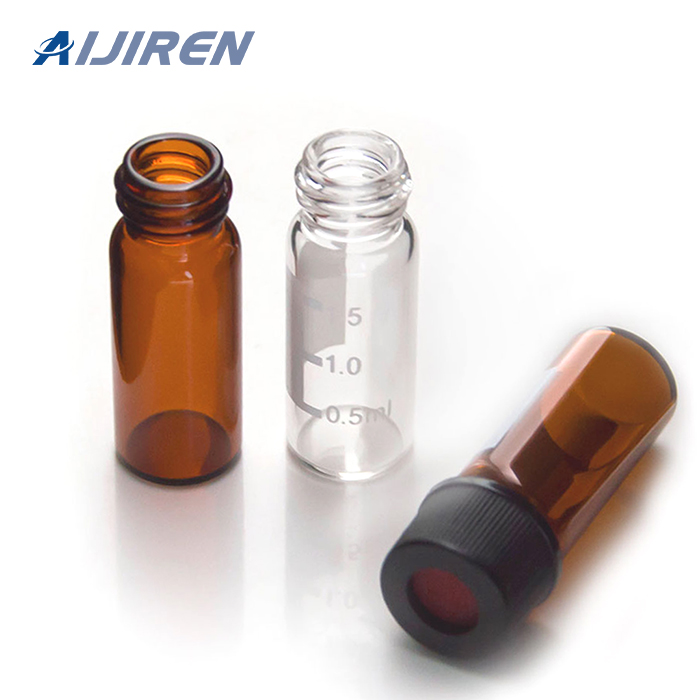Categories
Hot products
-
 Decoding Vial Discard Guidelines: Ensuring Precision in ChromatographyIn the intricate realm of chromatography, the reliability of results hinges on meticulous sample handling, and vial integrity plays a pivotal role. Knowing when to discard a vial is crucial for maintaining the accuracy of analyses and preventing potential contamination. Visible Damage: Vials exhibiting visible cracks, chips, or scratches should be promptly discarded. Such damage compromises the structural integrity of the vial, risking sample contamination.Seal Compromise: A compromised s...
Decoding Vial Discard Guidelines: Ensuring Precision in ChromatographyIn the intricate realm of chromatography, the reliability of results hinges on meticulous sample handling, and vial integrity plays a pivotal role. Knowing when to discard a vial is crucial for maintaining the accuracy of analyses and preventing potential contamination. Visible Damage: Vials exhibiting visible cracks, chips, or scratches should be promptly discarded. Such damage compromises the structural integrity of the vial, risking sample contamination.Seal Compromise: A compromised s... -
 Navigating Micro Inserts for HPLC Vials: A Comprehensive GuideChoosing the right micro insert for High-Performance Liquid Chromatography (HPLC) vials is paramount for achieving precise and reproducible results in analytical workflows. Here’s a concise guide to help you make informed decisions: Sample Volume Consideration: Assess your sample volume requirements. Micro inserts come in various volumes, ensuring compatibility with a spectrum of sample sizes.Compatibility with Vial: Ensure the micro insert is compatible with the chosen HPLC vial. A...
Navigating Micro Inserts for HPLC Vials: A Comprehensive GuideChoosing the right micro insert for High-Performance Liquid Chromatography (HPLC) vials is paramount for achieving precise and reproducible results in analytical workflows. Here’s a concise guide to help you make informed decisions: Sample Volume Consideration: Assess your sample volume requirements. Micro inserts come in various volumes, ensuring compatibility with a spectrum of sample sizes.Compatibility with Vial: Ensure the micro insert is compatible with the chosen HPLC vial. A... -
What are the different types of vials?Vials are small containers typically used to store and transport liquids. There are various types of vials designed for different purposes. what is the difference between tube and vials? Tubes and vials are both types of containers used for various purposes, and while there may be some overlap in their uses, there are distinct differences between the two: Tubes: Shape: Tubes are generally elongated cylindrical containers with open ends. They can be open at both ends or have one...
-
 Ensuring Sample Integrity: Navigating EPA Storage Vials Stability GuidelinesIn the field of environmental analysis, the reliability and accuracy of results hinge on the stability of stored samples. The U.S. Environmental Protection Agency (EPA) has established stringent guidelines to govern the storage of environmental samples in vials, emphasizing the preservation of sample integrity over time. Key Guidelines: Material Selection: EPA recommends the use of vials made from inert materials such as borosilicate glass or specially treated plastics to minimize samp...
Ensuring Sample Integrity: Navigating EPA Storage Vials Stability GuidelinesIn the field of environmental analysis, the reliability and accuracy of results hinge on the stability of stored samples. The U.S. Environmental Protection Agency (EPA) has established stringent guidelines to govern the storage of environmental samples in vials, emphasizing the preservation of sample integrity over time. Key Guidelines: Material Selection: EPA recommends the use of vials made from inert materials such as borosilicate glass or specially treated plastics to minimize samp... -
What are the vials used for sampling?Storage vials are small containers designed to store and preserve samples of various materials, typically liquids or fine powders. These vials are commonly used in laboratory settings for the safe storage of biological samples, chemicals, reagents, and other sensitive substances. what is stored in vials? Vials are used to store a wide range of materials across various industries and applications. The specific contents of a vial depend on its intended use. Here are some common types of ...
-
What is the standard size of vials?Headspace vials are specialized containers used in analytical chemistry, particularly in gas chromatography (GC) and gas chromatography-mass spectrometry (GC-MS) applications. These vials are designed to contain both the sample and the headspace, which is the space above the sample in the container. The headspace vial is typically sealed with a septum cap that allows for the introduction of a syringe needle. This design enables the withdrawal of a gaseous sample (the headspace) without di...
-
What are the different types of vial and its uses?Vials are small containers typically made of glass or plastic that are used for storing and transporting various substances. They come in different types and sizes to accommodate a wide range of applications. Screw Top Vials:Uses: Commonly used in laboratories for sample storage. They often have a threaded top that can be sealed with a screw cap.They are commonly used in laboratories for storing liquids, powders, or solid samples.Crimp Top Vials:Uses: Also used in laboratories for sa...
-
How many types of headspace are there?Headspace vials are a type of specialized sample container used in analytical chemistry, particularly in gas chromatography (GC) and gas chromatography-mass spectrometry (GC-MS) techniques. These vials are designed to facilitate the analysis of volatile compounds in a sample. During analysis, the headspace vial is heated to a specific temperature, which causes the volatile compounds in the sample to vaporize and equilibrate within the headspace. The gas phase in the headspace is then samp...
-
What is the vial of autosampler for HPLC?HPLC autosampler is a device used in high-performance liquid chromatography (HPLC) to automatically introduce samples into the chromatograph. It allows for the automated injection of multiple samples, increasing the efficiency and throughput of the HPLC system. The autosampler can precisely measure and inject small volumes of liquid samples into the chromatograph, making it an essential tool for analytical laboratories conducting HPLC analysis. 13-425 Screw Neck Vials ND13 Screw autosa...
-
What are the advantage of HPLC autosampler?HPLC (High-Performance Liquid Chromatography) autosampler is a device used in analytical chemistry to automate the injection of samples into an HPLC system. In HPLC, a sample is typically introduced into the system through an injection port, where it is then carried by a mobile phase (liquid solvent) through a chromatographic column. The components of the sample separate based on their chemical properties as they interact with the stationary phase within the column. 9 mm Short Thread Vial...




